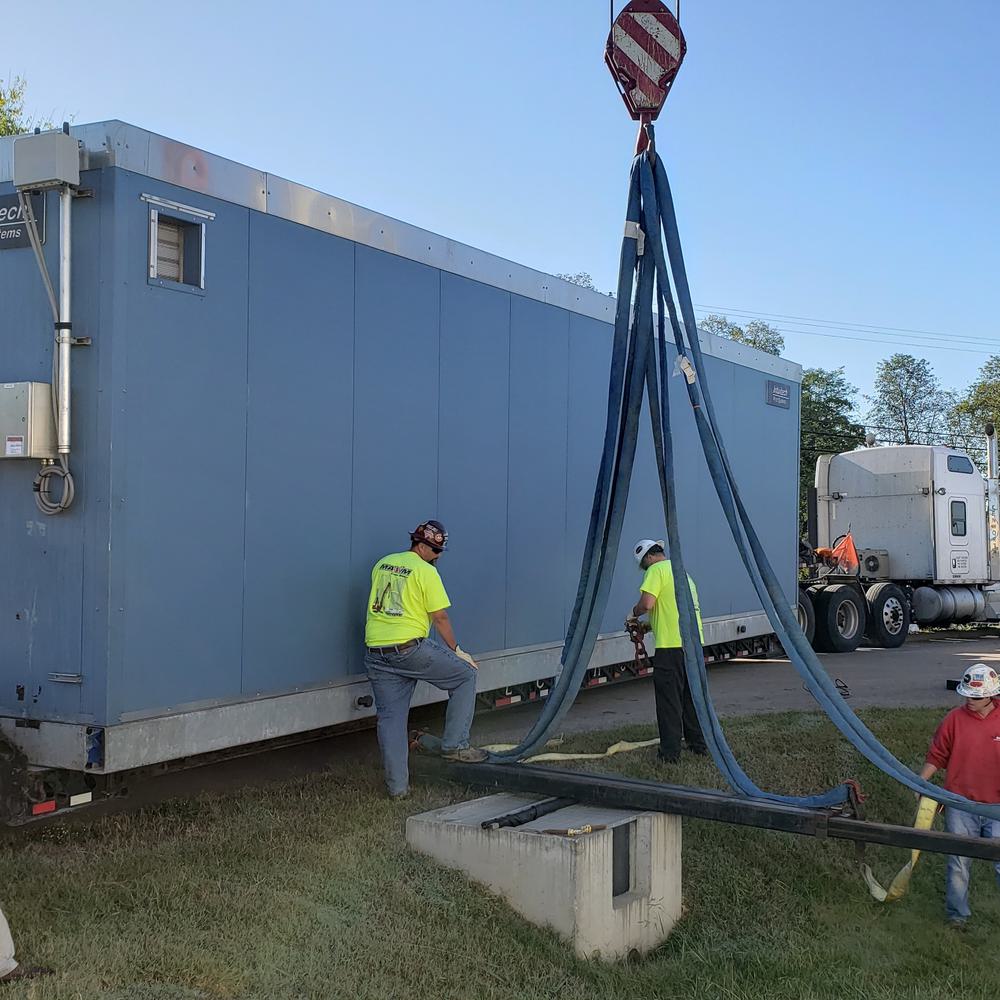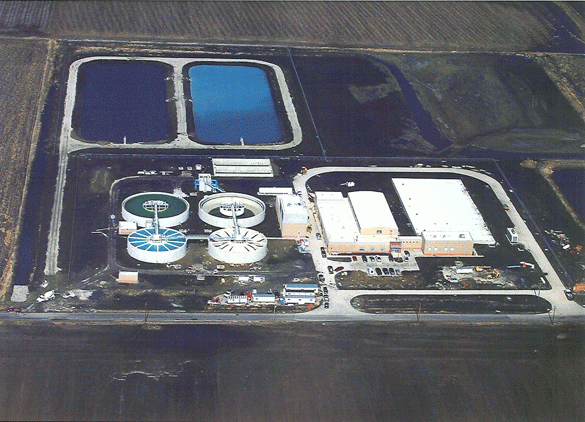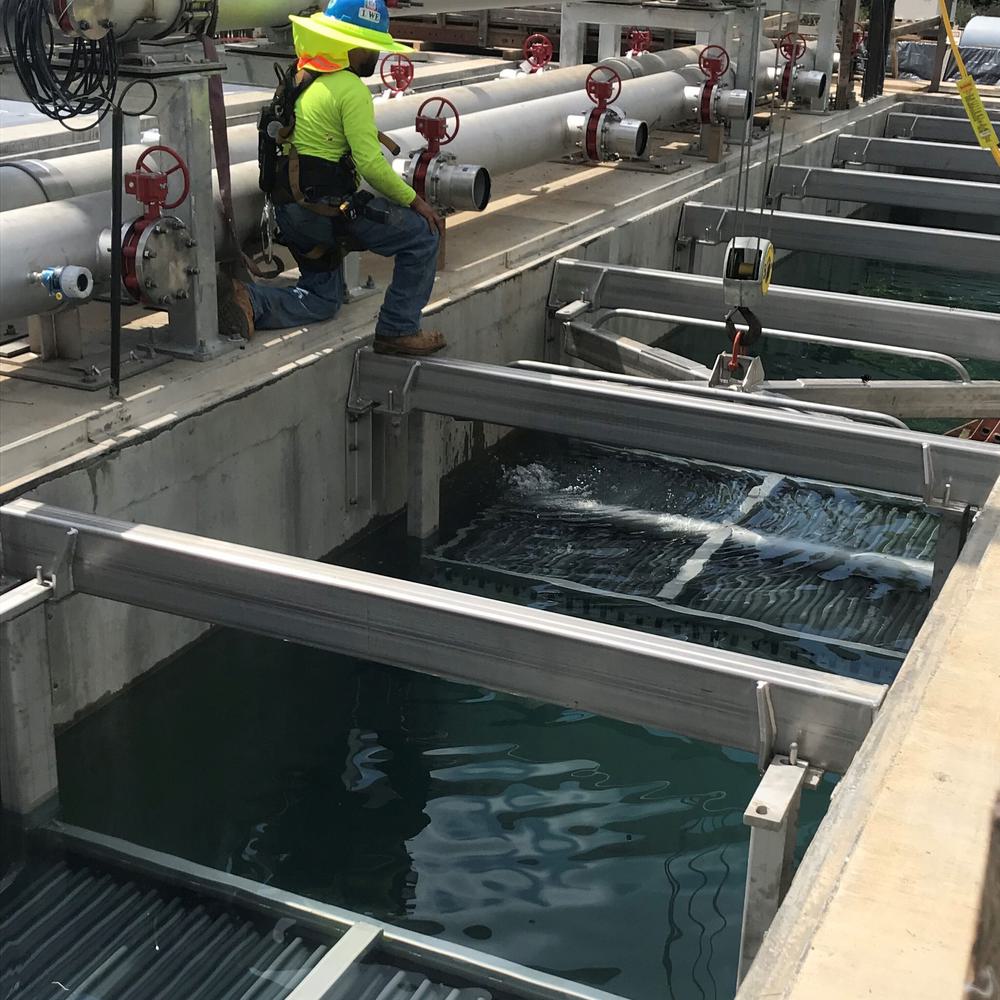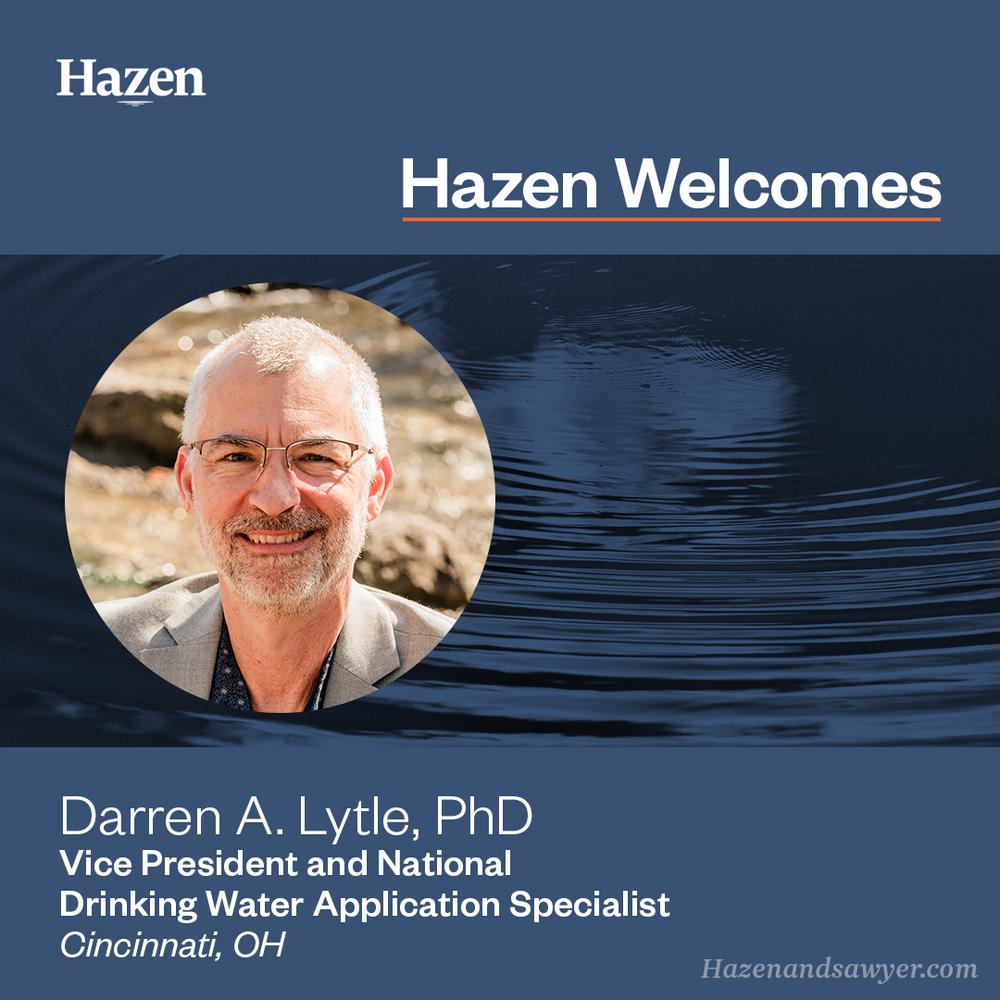How to Prepare for Microbial and Disinfection Byproduct Rule Changes
Leaders from a Maryland water utility and Hazen share tips for regulatory resilience, from data-driven coagulant changes to master planning with multiple benefits in mind.
This is part two of a two-part series on potential changes to the Microbial and Disinfection Byproduct Rules. See part one for what changes the EPA might propose and who could be impacted.
The Environmental Protection Agency (EPA) was required to propose updates to the Microbial and Disinfection Byproduct (M/DBP) Rules by the end of July 2025, but it just received approval to extend the deadline to July 30, 2027, and move the final rule deadline to October 2, 2028.
The extension means more time for utilities to prepare for potential regulatory changes around how they manage disinfection byproducts (DBPs) and microbes. What can they do to get ready?
For inspiration, we turned to a utility that’s adapted well to past rule changes. In 2014, after decades of work for water utilities in Michigan, Glenn Maggard moved to Rockville, Maryland, to supervise the city’s water treatment plant. At the time, the city’s distribution system had been generating high levels of DBPs called trihalomethanes (THMs), making it challenging to comply with the Stage 2 Disinfectant and Disinfection Byproducts Rule.
But a new, Hazen-designed coagulation system—and Maggard’s team’s commitment to testing and holistic planning—have since turned the facility into a model for DBP management. Here are some of their top recommendations for resilience amid regulatory uncertainty.
Water quality can change rapidly in the Potomac River (above), so Rockville’s drinking water utility uses frequent testing to ensure treatment systems are optimized for the current water quality.
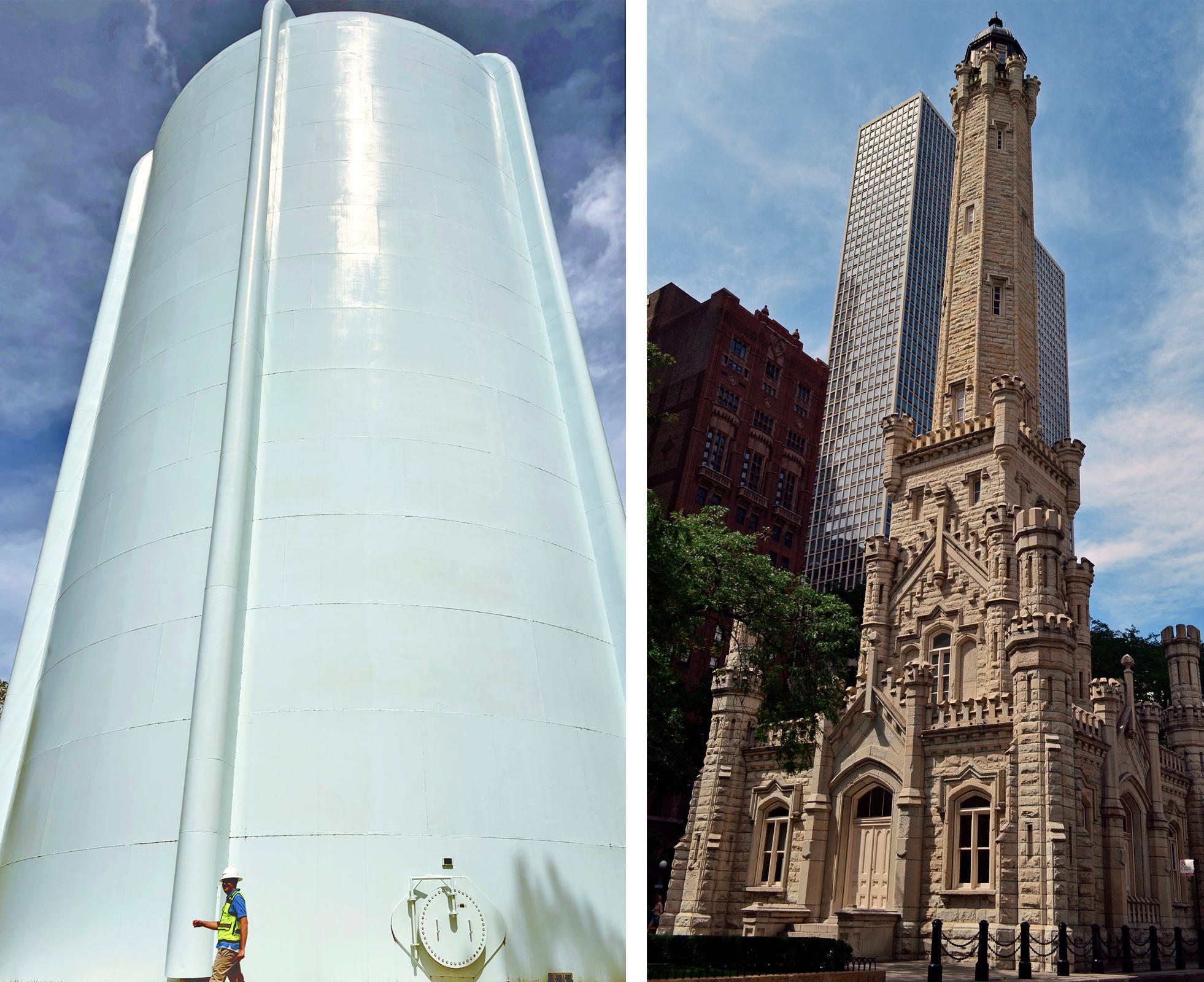
Standpipes (cylindrical water storage tanks) aren’t as common today as traditional water towers, but you can find active and former standpipe structures across the U.S., from Rockville (above left) to the Chicago Water Tower (above right), which once concealed a standpipe used in the 1800s.
Collect all the data you need to understand your system and its potential vulnerabilities.
When Maggard—who retired in the summer of 2025—joined Rockville in 2014, the city’s water plant was using polyaluminum chloride to remove organic material from the water. But it wasn’t catching enough of the organics. And Rockville’s distribution system wasn’t helping. Instead of standard water towers, with water tanks perched atop risers, the city uses standpipes: cylindrical tanks that start at ground level. Water is added to and removed from the bottom of each tank. That makes it hard to access and replace the water higher up, even with the help of internal mixing equipment.
“It’s just a tank filled with water that you can’t get to,” Maggard joked about the tanks, which were installed in the 1960s. "And so it just sits there and it cooks, with the chlorine and with the organics, and it starts making trihalomethanes.”
Data from lab and pilot tests run by Hazen showed that changing the water plant’s coagulant to ferric chloride could remove enough organic matter to limit THM formation in the standpipes and other parts of the distribution system.
But Maggard said that even after the new coagulation system was designed and built, it took a lot of additional data—as well as pushing his new team to make every treatment decision based on that data—to optimize the system for the water they were treating. He said the utility hasn’t had any issues with THMs since fully switching over to ferric chloride in 2018.
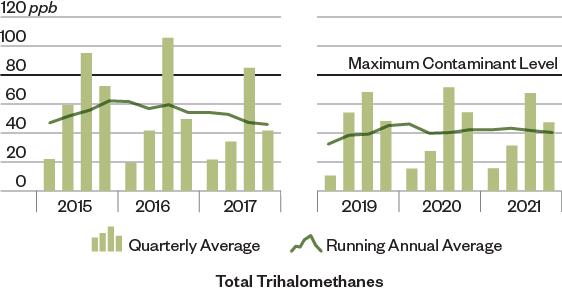
Switching coagulants in 2018, from polyaluminum chloride to ferric chloride, has helped Rockville's water plant keep trihalomethanes below the required limit of 80 parts per billion (annual average) in its distribution system.
Hazen Associate Meric Selbes, an expert on DBPs, agreed that the more data a utility can collect, the better. That includes longer-term data like changes in a utility’s source water quality over time, which can help utilities identify trends that may not currently pose problems but could in another 10 years. Hazen is also designing an assessment that utilities can pair that data with to get a better sense of their vulnerability to any M/DBP Rule changes the EPA proposes.
When Rockville’s water treatment plant began using ferric chloride as the coagulant in its coagulation system (shown above, left and right), it also had to add sodium hydroxide to keep the water’s pH level stable.
Think holistically and long-term.
Yaolin Fennell, a principal civil engineer who works on Rockville’s drinking water and wastewater systems, said it’s also crucial to think holistically about potential treatment changes.
“Everything in a water treatment plant is connected,” Fennell said. “You change one thing, and it may affect other things. For example, when we switched to the new coagulant, we had to look at [adding] a sodium hydroxide system. We had to change the pH [of the water].”
(That’s because ferric chloride can throw off the water’s alkalinity, meaning its ability to maintain a stable pH level.)
And Fennell encouraged utilities to “think long-term, not just about today’s rules.”
She’s working with Hazen on the latest round of master planning for Rockville’s water system. Those plans will inform future feasibility studies exploring what clarifier, filtration, and sludge equipment upgrades can best help the treatment plant manage not just regulated DBPs and microbes, but also other key contaminants like PFAS, and potentially even additional DBPs, if more become regulated.
Meg Roberts, who leads Hazen’s Distribution System Services group, said thinking holistically can also mean working with other municipal departments to plan infrastructure with water quality in mind. For example, even on dead-end streets, it’s ideal to loop water pipes back into another part of the distribution system, rather than dead-ending the pipes at the last house on the street. It can prevent water from sitting too long before people turn on their faucets.

The City of Rockville, Maryland (above), is just about 13 square miles geographically, but it uses 174 miles of underground distribution pipes to carry water to its 67,000 residents.
Cultivate a mindset of adaptation.
The Potomac River supplies Rockville’s raw water, and its quality is erratic. Storms can transform the water from basically clear to what looks like chocolate milk in hours, Maggard said. Last summer, when the river got sluggish, an algae bloom blanketed the water with green scum.
James Boone, the water plant’s acting superintendent following Maggard's retirement, said “above and beyond testing” helps staff keep changes like that from affecting the quality of the drinking water the plant produces. Sometimes they test the water every 15 minutes to make sure its various treatment systems are optimized for the current water characteristics, as well as for its 174 miles of distribution system pipes.
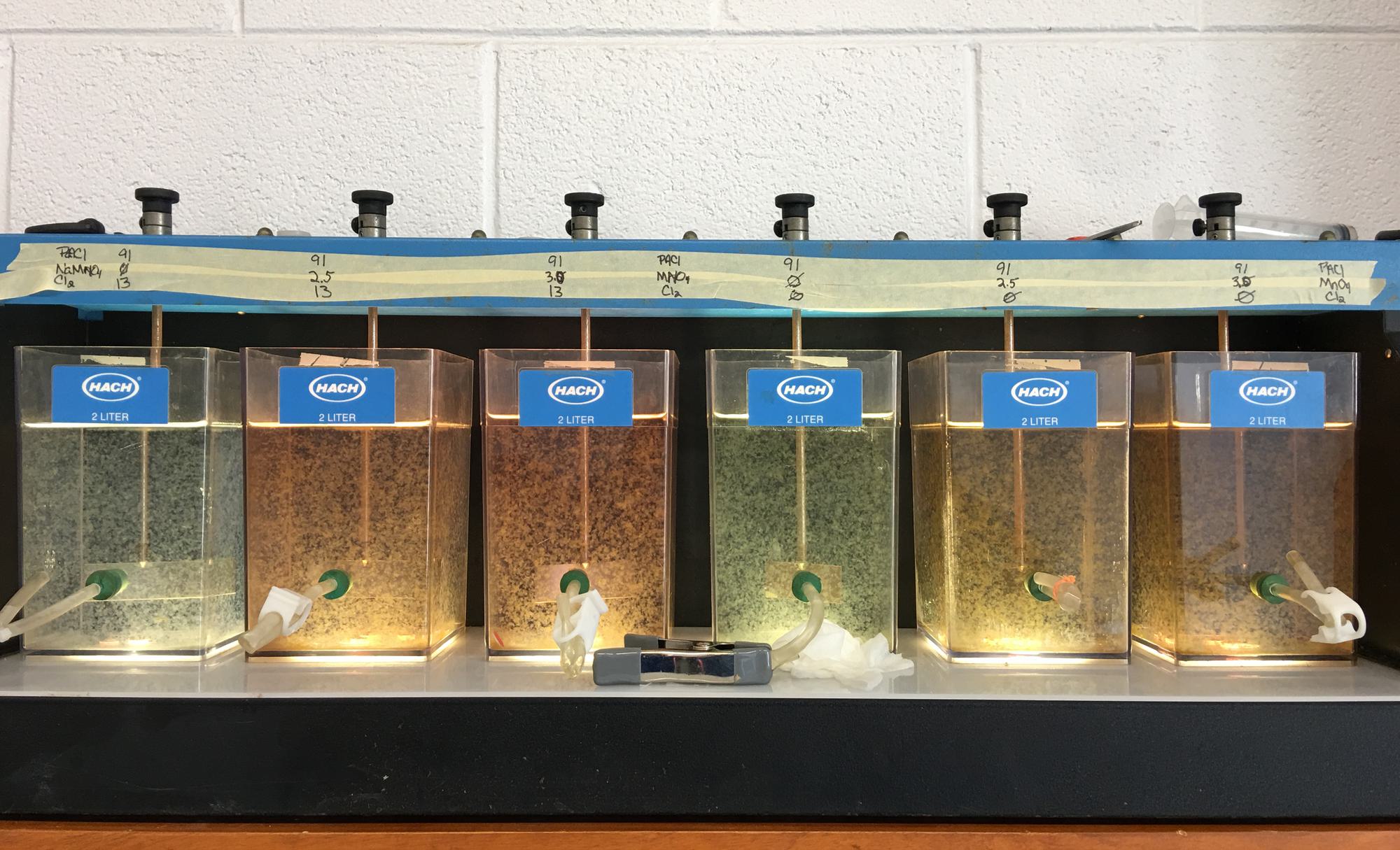
Drinking water treatment teams use jar tests (like the one shown above) to quickly test different doses of the same chemical treatment on water, in order to see which dose is most effective for the current water quality.
The testing is part of a broader mentality, Boone said. Staff are generally hunting for improvements regardless of whether a regulatory change is around the corner. They treat the plant’s standard operating procedures as “living documents” that could always be refined further, and always with customers in mind.
“We’re learning every day,” Boone said. “Even though we have such great treatment, we’re still learning.”
“What we do at the plant matters every day to thousands of Rockville customers, and we’re here to try and set the standard for that,” he added. “Whether we’re regulated or not, we always want to produce the best water that we possibly can.”





